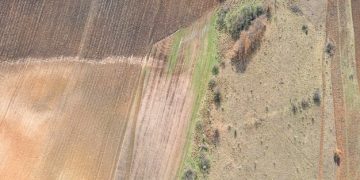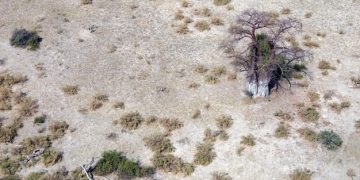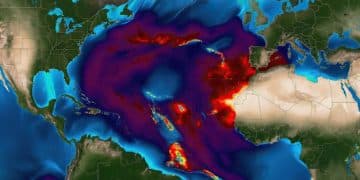Amazon deforestation’s impact on climate change, US agriculture
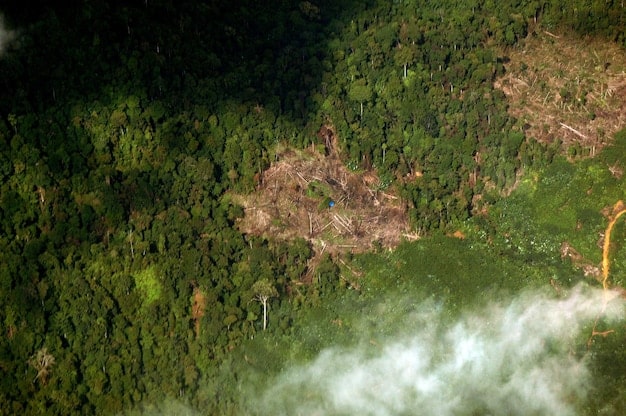
Deforestation in the Amazon Basin significantly accelerates global climate change through massive carbon emissions and alters rainfall patterns crucial for US agriculture, leading to potential drought, reduced crop yields, and increased food prices across the United States.
The intricate web of global ecosystems means that events in one corner of the world can ripple across continents, profoundly affecting far-flung regions. This reality is acutely evident when considering how deforestation in the Amazon Basin impacts climate change and US agriculture, a connection far more direct and critical than many might perceive.
the amazon’s vital role in global climate regulation
The Amazon rainforest, a sprawling biome often referred to as the “lungs of the Earth,” plays an unparalleled role in regulating global climate. Its sheer scale and biodiversity contribute significantly to atmospheric stability, influencing weather patterns far beyond South America’s borders.
carbon sequestration and oxygen production
One of the Amazon’s most critical functions is its massive capacity for carbon sequestration. Through photosynthesis, billions of trees absorb vast quantities of atmospheric carbon dioxide, converting it into biomass and releasing oxygen. This process is fundamental in mitigating the accumulation of greenhouse gases, which are primary drivers of climate change.
- Global Carbon Sink: The Amazon stores an estimated 150-200 billion tons of carbon, dwarfing the capacity of many other terrestrial ecosystems.
- Atmospheric CO2 Regulation: Its continuous absorption helps balance global carbon cycles, preventing more rapid increases in atmospheric CO2 concentrations.
- Oxygen Generation: While often overstated as producing “20% of the world’s oxygen,” its continuous release of oxygen is vital for local ecological health and contributes to atmospheric composition.
The intricate network of plant life, from towering ancient trees to dense undergrowth, creates a highly efficient system for carbon capture. This natural machinery operates continuously, acting as a crucial buffer against industrial emissions and other anthropogenic sources of carbon. The disruption of this delicate balance through deforestation directly undermines one of Earth’s most significant climate regulation mechanisms.
hydrological cycle and ‘flying rivers’
Beyond carbon, the Amazon is a powerhouse of the global hydrological cycle. Through evapotranspiration, trees release enormous amounts of water vapor into the atmosphere, forming vast “flying rivers” that transport moisture across continents. These atmospheric rivers are not just a regional phenomenon; they influence rainfall patterns across South America and beyond.
- Moisture Transport: Billions of tons of water vapor are released daily, forming atmospheric moisture plumes.
- Rainfall Generation: This moisture is transported by winds, contributing to rainfall in distant regions like the La Plata Basin, a major agricultural area in South America.
- Climate Stability: The consistent release of moisture helps maintain cooler temperatures and stable atmospheric conditions across various latitudes.
The collective transpiration of the Amazon’s trees creates a high-pressure system that pushes moisture into the atmosphere, where it travels thousands of miles. This intricate dance between forest and atmosphere underpins regional and global climate stability. The disruption of this cycle, a direct consequence of deforestation, has cascading effects on weather systems, altering precipitation regimes and temperature gradients in unexpected ways.
In essence, the Amazon is not merely a collection of trees; it is a complex, interconnected system that actively shapes Earth’s climate. Its preservation is not just an environmental imperative but a critical component of global atmospheric and hydrological stability, with direct implications for human societies and economies worldwide.
deforestation in the amazon: scale and drivers
The Amazon Basin, while vast and resilient, faces unprecedented pressure from deforestation. Understanding the scale of this loss and the primary forces driving it is essential to grasping its impact on global climate and, by extension, US agriculture. Data consistently points to alarming rates of forest destruction, with significant implications for the future of the planet.
measuring the loss: current rates and historical context
Deforestation rates in the Amazon have fluctuated over the decades, often responding to economic pressures, policy changes, and enforcement efforts. However, the overall trend has been one of significant decline in forest cover. Satellite monitoring systems, such as Brazil’s PRODES and DETER programs, provide near real-time data, revealing the persistent nature of this environmental crisis.
- Vast Areas Cleared: Since the 1970s, an area roughly the size of France has been cleared from the Brazilian Amazon alone.
- Fluctuating Trends: While there have been periods of decline in deforestation, recent years have seen worrying surges, particularly under certain political administrations.
- Persistent Threat: Despite increased global awareness and conservation efforts, the pressure on the forest remains immense, driven by powerful economic interests.
The scale of destruction is staggering. Each cleared hectare represents not just the loss of trees but the destruction of complex ecosystems, the release of stored carbon, and the disruption of vital hydrological processes. The cumulative effect of decades of deforestation is now reaching critical thresholds, threatening to push parts of the Amazon past a tipping point where vast areas could transform into a drier, savanna-like landscape.
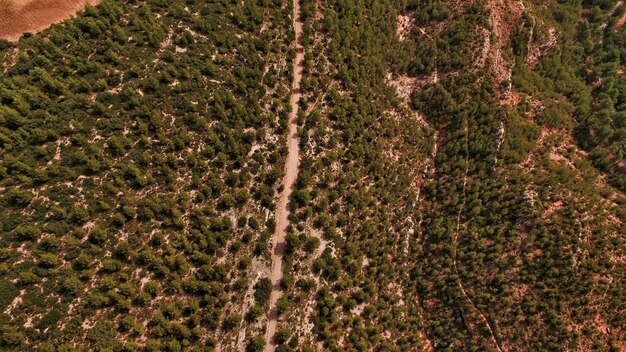
primary drivers of deforestation
The intricate problem of Amazon deforestation is fueled by a complex interplay of economic, social, and political factors. While some drivers might appear localized, their underlying mechanisms are often connected to global supply chains and consumer demands.
- Cattle Ranching: This is unequivocally the largest driver, accounting for roughly 80% of Amazon deforestation. Land is cleared to create pastures for livestock, driven by both domestic consumption and international beef markets.
- Soy Cultivation: Large-scale monoculture operations, primarily for soy, also contribute significantly. Much of this soy is used as animal feed, indirectly linking to the global meat industry.
- Illegal Logging: Despite legal protections, illicit logging operations persist, extracting valuable timber and often preceding other forms of land conversion. These activities are particularly challenging to monitor and control.
- Mining: Both legal and illegal mining for gold, iron ore, and other minerals lead to localized but severe deforestation and environmental contamination.
- Infrastructure Projects: Roads, dams, and other infrastructure projects open up previously inaccessible areas, facilitating further deforestation by other actors.
The economic incentives often outweigh environmental concerns for local actors, while global demand for commodities like beef and soy provides a powerful market pull. Furthermore, a lack of robust governance, insufficient enforcement of environmental laws, and land tenure insecurity exacerbate the problem. Addressing deforestation requires a multi-pronged approach that tackles these root causes, from promoting sustainable land use practices and strengthening rule of law to shifting consumer behavior and fostering international cooperation.
The continuous assault on the Amazon’s forest cover is a race against time. Each hectare lost diminishes the planet’s capacity to regulate its climate and directly fuels the very phenomena that later disrupt distant agricultural systems. Understanding these drivers is the first step toward effective intervention.
climate change feedback loops from amazon deforestation
Deforestation in the Amazon does more than just release carbon; it sets in motion a series of dangerous climate change feedback loops, accelerating the pace of global warming and threatening the very existence of the rainforest itself. These loops amplify the initial impact, creating a cycle that is increasingly difficult to reverse.
release of stored carbon and reduced carbon sink capacity
When the Amazon rainforest is cleared, particularly through burning, vast quantities of carbon that have been sequestered in trees and soil for centuries are immediately released back into the atmosphere as carbon dioxide and other greenhouse gases. This influx contributes directly to the atmospheric concentration of these heat-trapping gases.
- Immediate Emissions: Burning biomass quickly converts stored carbon into CO2, accelerating atmospheric warming.
- Long-Term Loss: Cleared land loses its ability to absorb carbon, meaning fewer trees are available to remove CO2 from the atmosphere in the future.
- Soil Carbon Loss: Deforestation also exposes forest soils, leading to the decomposition of organic matter and further carbon release.
The Amazon actively removes billions of tons of carbon from the atmosphere annually. As deforestation reduces the forest’s size, its capacity to act as a carbon sink diminishes. This weakening of a vital natural climate regulator allows more human-emitted carbon to remain in the atmosphere, intensifying the greenhouse effect. This positive feedback loop means that as more forest is lost, the remaining forest becomes less effective at combating climate change, leading to even faster warming.
altered rainfall patterns and increased drought risk
Perhaps one of the most profound and concerning feedback loops involves the Amazon’s hydrological cycle. The forest generates its own rainfall through evapotranspiration, creating a humid environment that sustains itself. Deforestation disrupts this delicate balance, leading to drier conditions and an increased risk of drought, both regionally and potentially globally.
- Reduced Transpiration: Fewer trees mean less water vapor is released into the atmosphere, weakening the “flying rivers.”
- Local Drying: This leads to localized drying, making remaining forest areas more susceptible to fires.
- Regional Climatic Shifts: The altered moisture transport impacts precipitation patterns in other parts of South America, including key agricultural regions.
As the forest dries out, it becomes more vulnerable to fires, which release even more carbon and further reduce the forest’s ability to generate moisture. This propagates a cycle of drought, fire, and more deforestation, pushing the Amazon towards a critical tipping point. Scientists warn that beyond this threshold, large parts of the Amazon could transition from a humid rainforest to a dry savanna, fundamentally altering its ecosystem and climatic functions. Such a transformation would significantly reduce the basin’s ability to regulate climate, unleashing even more stored carbon and further accelerating global warming, with far-reaching consequences for global weather systems upon which agriculture in various parts of the world, including the US, depends.
These feedback loops illustrate the complex and interconnected nature of Earth’s climate system. Deforestation in the Amazon is not an isolated local event; it is a global climate accelerator, driving changes that will be felt worldwide for generations to come, making it a critical concern for every nation.
impact on US climate and severe weather resilience
While the Amazon Basin might seem geographically distant, its health has tangible implications for the climate and weather resilience of the United States. The intricate atmospheric connections mean that disruptions in one major climatic system can propagate across hemispheres, affecting temperature patterns, precipitation, and the frequency of extreme weather events in North America.
atmospheric teleconnections and changing weather patterns
Scientific research increasingly highlights the concept of “atmospheric teleconnections,” where large-scale changes in one region influence atmospheric circulation patterns in distant parts of the world. The Amazon, as a significant driver of the global hydrological cycle and atmospheric energy balance, plays a crucial role in these teleconnections.
- Jet Stream Influence: Changes in Amazonian precipitation and temperature can influence the position and intensity of atmospheric currents, including the jet stream over North America.
- Altered Storm Tracks: Variations in these high-altitude winds can shift storm tracks, leading to atypical rainfall distributions, prolonged droughts, or unusual cold snaps in the US.
- Increased Variability: The overall effect can be an increase in weather variability and unpredictability, making planning for sectors like agriculture more challenging.
Reduced moisture generation from a deforested Amazon, combined with altered atmospheric heating patterns, could lead to shifts in the Atlantic Meridional Overturning Circulation (AMOC) or affect the development of El Niño and La Niña events. These large-scale oceanic and atmospheric phenomena are known to have profound impacts on US weather, influencing everything from hurricane activity to winter temperatures and spring rainfall. While the exact mechanistic pathways are still under research, the general consensus points to a less stable and more extreme future climate for the US as a consequence of Amazonian degradation.
amplified extreme weather events
Beyond broad changes in weather patterns, the broader climate change exacerbated by Amazon deforestation could amplify the intensity and frequency of extreme weather events already challenging the United States. This includes more severe heatwaves, prolonged droughts, and potentially more intense storms.
- More Intense Heatwaves: A warming global climate, to which Amazon emissions contribute, increases the likelihood and severity of heatwaves across the US, threatening public health and energy grids.
- Prolonged Droughts: Changes in hemispheric moisture transport could lead to extended periods of drought in key agricultural regions of the US, particularly the Midwest and West.
- Coastal Impacts: Sea-level rise, driven by global warming, also impacts US coastal communities, increasing the frequency of tidal flooding and storm surges.
While hurricanes and other severe storms are naturally occurring, climate models suggest that a warmer atmosphere can hold more moisture, potentially leading to heavier rainfall during such events. Furthermore, rising ocean temperatures, also linked to global warming, can fuel more intense tropical cyclones. The weakening of Earth’s natural climate regulatory systems, such as the Amazon, reduces our collective ability to mitigate these intensifying challenges, leaving the US more exposed to their economic and social costs. Building resilience to these impacts becomes increasingly difficult as the fundamental drivers of climate change are exacerbated globally.
The interconnectedness of Earth’s climate systems means that degradation in one vital component, such as the Amazon rainforest, sends ripples across the globe, impacting the climatic stability and resilience of nations like the United States. Recognizing this global dependency is crucial for framing both domestic and international environmental policies.
direct and indirect impacts on US agriculture
The health of the Amazon rainforest might seem remote to US farmers, but the links are surprisingly direct and profound. Changes in global climate patterns, intensified by Amazon deforestation, pose significant threats to the productivity, profitability, and stability of American agriculture, from staple crops to specialty produce.
altered growing seasons and crop yields
A stable and predictable climate is the bedrock of agricultural success. Deforestation-driven climate change, with its concomitant shifts in rainfall, temperature, and extreme weather, directly threatens this stability for US farmers.
- Unpredictable Rainfall: US agricultural heartlands typically rely on timely and sufficient rainfall. Shifts in atmospheric patterns influenced by a degraded Amazon could lead to either drought conditions or excessive, ill-timed precipitation, both detrimental to crop growth.
- Extended Droughts: Regions like the Midwest and California, already prone to water stress, could experience more frequent and severe droughts as global moisture transport patterns change, leading to significant yield reductions for corn, soy, wheat, and specialty crops.
- Increased Heat Stress: Higher average temperatures and more frequent heatwaves, particularly during critical growing stages, can reduce crop pollination, accelerate maturation, and decrease overall yields, impacting everything from dairy production to row crops.
- Shorter Frost-Free Periods: While some regions might see extended growing seasons, others could experience more erratic frost events or milder winters that disrupt pest cycles, potentially harming crops.
These climatic shifts translate directly into financial losses for farmers, reduced food supplies, and increased irrigation costs. The delicate balance of timing for planting, growing, and harvesting is thrown off, making agricultural planning increasingly challenging. Crop insurance premiums might rise, and the viability of certain crops in traditional regions could be jeopardized, forcing difficult adaptation decisions.
supply chain disruptions and food prices
Beyond the direct impacts on fields, the effects of deforestation in the Amazon can reverberate through the entire US agricultural supply chain, leading to higher food prices for consumers and economic instability for the industry.
- Reduced Domestic Production: If US crop yields decline significantly due to climate stressors, the domestic supply of certain agricultural products will fall, pushing prices higher.
- Increased Imports: To compensate for domestic shortfalls, the US might need to increase imports, which can be more expensive and subject to global market volatility. This dependency shifts economic power and makes the food supply chain less secure.
- Input Cost Increases: Extreme weather events—whether floods, droughts, or severe storms—can damage infrastructure, disrupt transportation routes, and increase the cost of inputs like fuel and fertilizer, all of which get passed down to consumers.
- Global Commodity Price Volatility: As climate change impacts agriculture globally, not just in the US, major commodity markets (corn, soy, wheat) become more volatile. US agriculture is deeply integrated into these markets, so even if domestic production is stable, global price increases can still affect profitability and consumer costs.
For the average American consumer, this translates to higher grocery bills. For the US economy, it means potential inflation pressures and a less secure food system. The interconnectedness of global climate systems means that environmental degradation in one crucial area, like the Amazon, can catalyze a chain reaction, affecting everything from a farmer’s yield to the price of bread on a supermarket shelf thousands of miles away. Ensuring the long-term food security and economic stability of the US thus indirectly but fundamentally depends on the health of ecosystems far beyond its borders.
mitigation strategies: US role and international cooperation
Addressing the pervasive threat of Amazon deforestation requires a multifaceted approach, involving both domestic US action and robust international cooperation. The problem is complex, intertwining economic development, social justice, and environmental protection, demanding innovative solutions and sustained commitment.
policy and consumer choices in the US
The United States, as a major consumer market and global economic power, holds significant leverage to influence practices that impact the Amazon. Policy decisions and consumer behavior within the US can drive demand for sustainably sourced products and support conservation efforts.
- Sustainable Sourcing: Encouraging and enforcing policies that incentivize US businesses to source commodities like soy, beef, and timber from deforestation-free supply chains is crucial. This puts market pressure on producers in the Amazon to adopt sustainable practices.
- Consumer Awareness: Educating American consumers about the link between their purchasing habits and Amazon deforestation can empower them to make more informed choices, opting for products certified as sustainably produced.
- Investment and Financial Regulation: US financial institutions can play a role by divesting from companies engaged in, or financing, deforestation. Regulations that require transparency in supply chains can help identify and deter destructive practices.
- Technological Support: The US can offer technological assistance, such as advanced satellite monitoring systems and data analysis tools, to help Amazonian countries better track and combat illegal deforestation.
These domestic actions, while seemingly localized, send powerful market signals to global producers. By prioritizing sustainability, the US can shift economic incentives away from destructive practices and towards conservation, aligning its economic power with its environmental goals.
international collaboration and financial mechanisms
Given the global nature of climate change and the Amazon’s international significance, collaboration with Amazonian countries and multilateral organizations is indispensable. Financial instruments and knowledge sharing can support local efforts to protect the forest.
- “Payments for Ecosystem Services”: The US can contribute to international funds that provide financial incentives to Amazonian countries and local communities for avoided deforestation and forest conservation. This recognizes the global value of the services the forest provides.
- Debt-for-Nature Swaps: Facilitating agreements where a portion of a country’s foreign debt is forgiven in exchange for commitments to invest in conservation efforts can free up resources for environmental protection.
- Capacity Building: Supporting local governments, indigenous communities, and civil society organizations in Amazonian countries with resources and training to strengthen land tenure, enforce environmental laws, and promote sustainable livelihoods.
- Research and Development: Collaborating on scientific research to better understand the Amazon’s ecosystems, develop sustainable agricultural practices suitable for the region, and model the impacts of climate change can provide essential tools for conservation.
The principle here is shared responsibility. While Amazonian nations have sovereignty over their territories, the global community, particularly major economies like the US, benefits directly from the Amazon’s climate regulation services. Therefore, providing financial and technical support is not merely aid but an investment in global environmental security and the economic resilience of nations, including the US itself. Effective mitigation hinges on a partnership approach, where all stakeholders work together to protect this invaluable natural asset for planetary well-being.
the future: critical thresholds and urgent action
The trajectory of Amazon deforestation and its broader climatic impacts paints a stark picture of critical thresholds and the urgent need for action. Scientists increasingly warn that delays in addressing this issue risk pushing the rainforest beyond a point of no return, with irreversible consequences for global climate stability and agricultural systems worldwide.
the amazon’s tipping point
A key concept in understanding the severity of the situation is the “tipping point” for the Amazon. This refers to a hypothetical threshold beyond which large parts of the rainforest could irreversibly transform into a drier, savanna-like ecosystem. This transition would be driven by a combination of deforestation, increased fires, and rising temperatures, creating a self-reinforcing cycle of degradation.
- Irreversible Change: Once reached, this tipping point would mean the loss of vast areas of rainforest, even if deforestation ceased entirely.
- Ecological Collapse: It would lead to widespread biodiversity loss, severe social impacts on indigenous communities, and significantly altered regional weather patterns.
- Accelerated Global Warming: The release of massive amounts of stored carbon and the reduced capacity for future carbon sequestration would drastically accelerate global warming for decades to come.
Estimates for this tipping point vary, but many scientists suggest it could be reached if 20-25% of the Amazon is deforested. Some regions, particularly the southeastern Amazon, are already showing signs of this transition. Avoiding this scenario requires immediate and drastic reductions in deforestation rates, coupled with reforestation efforts and climate change mitigation globally. The consequences of crossing this threshold – particularly amplified global warming and chaotic weather patterns – would have a direct bearing on US agricultural viability and food security, making the Amazon’s fate directly linked to American livelihoods.
collective responsibility and long-term vision
The challenge of Amazon deforestation, and its cascading effects on climate change and global agriculture, underscores a fundamental truth: environmental issues are interconnected and demand collective responsibility. No single nation or sector can solve this problem in isolation. It requires a long-term vision that transcends immediate economic gains and political cycles.
- Shifting Paradigms: Moving away from short-term exploitation of natural resources towards models of sustainable development that value standing forests for their ecosystem services.
- Indigenous Knowledge: Recognizing and empowering indigenous communities as crucial guardians of the forest, integrating their traditional ecological knowledge into conservation strategies.
- Global Accountability: Establishing stronger international mechanisms for accountability and enforcement against illegal deforestation and trade in associated commodities.
- Investment in Green Economies: Directing investment into forest-friendly agricultural practices, eco-tourism, bio-economies, and other sustainable ventures that provide economic alternatives to deforestation.
For the United States, this means not only pursuing domestic climate resilience but also actively engaging in international diplomacy, providing financial and technical support, and reforming its own supply chains to ensure they do not inadvertently fuel the destruction of the Amazon. The future of global climate stability and, by extension, the security of US agriculture, is intrinsically linked to the decisions made today regarding the Amazon rainforest. The choice is clear: proactive, urgent action to protect a global treasure, or face increasingly severe and costly consequences.
The scale of the challenge means that every effort, from individual consumer choices to macro-level policy decisions, contributes to either accelerating or mitigating the crisis. A sustained, global commitment to the Amazon’s health is not just an environmental ideal; it is an economic and societal imperative for all, including the critical agricultural sector of the United States.
| Key Point | Brief Description |
|---|---|
| 🌳 Carbon Release | Deforestation releases vast CO2, accelerating global warming. |
| 🌧️ Rainfall Shifts | Alters global atmospheric moisture, impacting US rainfall patterns. |
| 🌾 US Crop Threat | Leads to droughts, heat stress, and yield reductions for US agriculture. |
| 💰 Economic Impact | Can increase food prices and disrupt agricultural supply chains. |
frequently asked questions about amazon deforestation and its global impacts
▼
When the Amazon rainforest is cleared, especially through burning, vast quantities of carbon stored in trees and soil are released into the atmosphere as carbon dioxide. This process significantly increases the concentration of greenhouse gases, directly contributing to global warming. Additionally, the deforested land loses its capacity to absorb future carbon from the atmosphere, further accelerating climate change.
▼
“Flying rivers” refer to the massive amounts of water vapor released into the atmosphere by Amazonian trees through evapotranspiration. This moisture forms atmospheric currents that transport water across South America and beyond, influencing rainfall. Deforestation reduces the number of trees, thereby weakening these atmospheric rivers, leading to drier conditions locally and altered rainfall patterns in distant regions, including the United States.
▼
Yes, Amazon deforestation can trigger atmospheric teleconnections that alter weather patterns in the US. Changes in Amazonian moisture and heat exchange can influence high-altitude atmospheric currents like the jet stream, potentially leading to shifts in US storm tracks. This can result in increased frequency of prolonged droughts, more intense heatwaves, or unpredictable rainfall crucial for crop growth, directly affecting US agricultural productivity and food security.
▼
Broad-acre crops like corn, soybeans, and wheat, particularly in the Midwest, are highly vulnerable to altered rainfall and increased heat stress. Specialty crop regions, such as California, face significant risks from prolonged droughts impacting water availability for irrigation. Livestock, dairy, and fruit production can also be affected by heat stress on animals and changes in feed availability, leading to widespread implications across the US agricultural sector.
▼
The US can mitigate impacts by promoting sustainable sourcing of commodities (like beef and soy), encouraging responsible consumer choices, and strengthening financial regulations against deforesting industries. Internationally, the US can support “payments for ecosystem services” to Amazonian countries, participate in debt-for-nature swaps, and facilitate technology transfer and capacity building for forest protection. These efforts collectively aim to reduce deforestation rates and support conservation.
conclusion: a shared destiny for amazon and american agriculture
The intricate relationship between how deforestation in the Amazon Basin impacts climate change and US agriculture underscores a profound truth: environmental health is globally interconnected. The continued degradation of this vital rainforest not only exacerbates climate change on a planetary scale but also directly threatens the stability of American food production through altered weather patterns, increased climate variability, and exacerbated extreme events. Addressing this challenge requires immediate, collaborative action, transcending geographical boundaries and political agendas. By actively supporting conservation efforts in the Amazon, promoting sustainable consumption, and investing in resilient agricultural practices, the United States can safeguard its own long-term food security and contribute meaningfully to global climate stability—a shared destiny determined by collective choices today.
